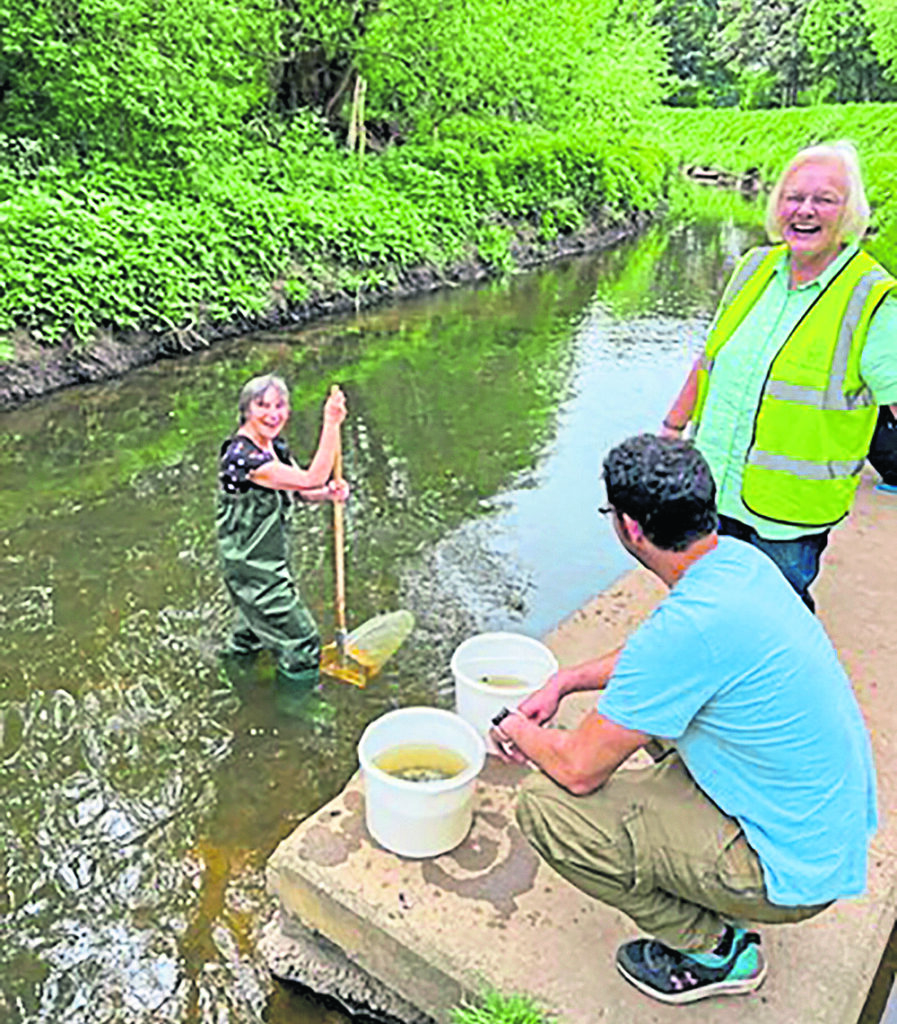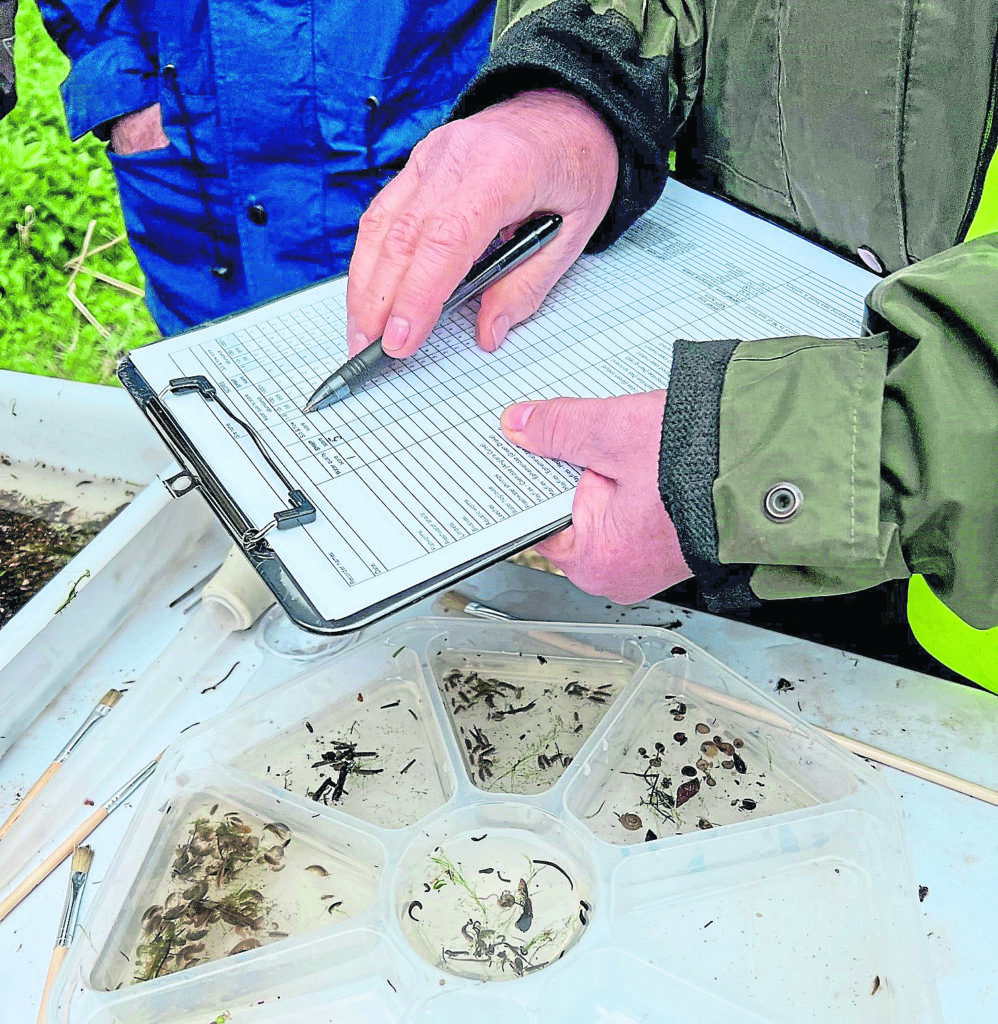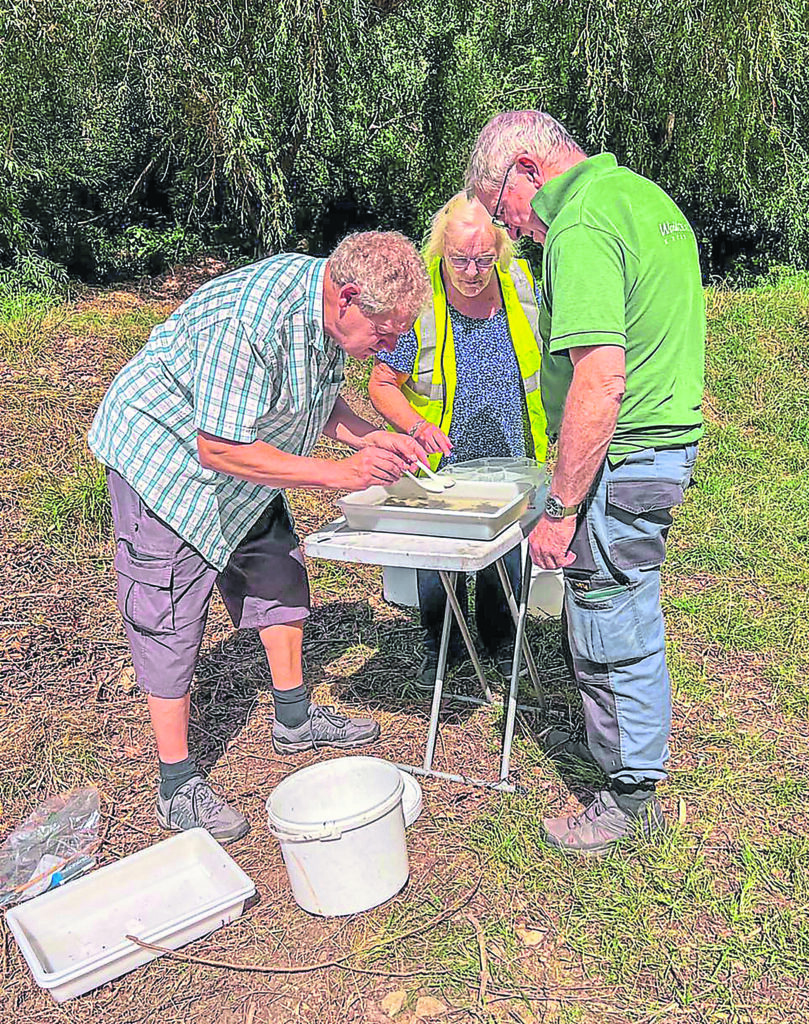Creatures living in the River Foss in York are helping volunteers to maintain water quality, as Sally Clifford finds out.
THEIR presence is crucial to keeping on top of river pollution. To the naked eye the tiny creatures are simply pond life, but to the river detectives they provide important evidence.

Retired freshwater biologist, Barbara Hilton, is one of 35 volunteers involved in the Citizen Science Project monitoring the water quality of the River Foss in her home city of York. The project’s aim is to monitor the entire river catchment for chemical and biological water quality, the presence or absence of water vole, otter and mink as well as the improvement of bankside vegetation management.
This involves regular biannual sampling of the macroinvertebrates, small unnoticed creatures that are a food source for fish, birds and mammals whose presence helps to maintain water quality by feeding on and breaking down organic matter.

Kick sampling
According to Barbara these creatures are also useful indicators of pollution. To help in their findings, Barbara talks about the importance of ‘kick sampling’, which involves getting into the river wearing waders and using a professional standard net with 1mm mesh to catch the creatures from the river bed.
“We use the professional technique for kick sampling. We get into the river with a professional standard net and you kick the substrate, the sand, rocks, silt on the bottom of the river bed,” explains Barbara. “Whatever you dislodge gets caught as you move across the river. You are trying to get the habitat in the river.”

The process takes three minutes. A further minute is spent washing stones to which the creatures cling.
“These animals, the macroinvertebrates, worms, freshwater shrimp, you can see with the naked eye live within the river. They are not very mobile and they have to live through whatever pollution is coming down the river,” says Barbara.
Working in pairs and using buckets and trays, the volunteers analyse their findings and report anything untoward to the Environment Agency which can carry out investigations.
“From these animals we can identify, generally, the organic quality of the water of the Foss. Most of the obvious pollution is organic pollution and the animals will tell us the biological quality of the water,” says Barbara. The team are currently sampling 13 sites on the main river, and one on a tributary, twice a year in spring and autumn.

Passing on the knowledge
Originally from Derbyshire, Barbara spent the majority of her working life working for South West Water Authority in Cornwall and West Devon before transferring to Yorkshire when she joined Yorkshire Water. Her research also led to her working with farmers focusing on biomass energy plants before her retirement. Now Barbara is passing on her expertise and knowledge training the volunteers involved in the Citizen Science Project.
It’s already familiar territory for Barbara as she had enjoyed exercising her dogs along the River Foss.
Her important work analysing the creatures within began four years ago when she joined The River Foss Society. Established 50 years ago to protect and preserve the river, the society has around 200 members.
Mentioning her previous work on her application piqued the interest of the society’s stalwart member Mike Gray who, like Barbara, is currently the society’s co-chair.
“The River Foss Society has been water quality sampling for some years. When I joined four years ago I did say on my application I was a retired freshwater biologist. Mike was extremely enthusiastic and said they would love me to get involved,” recalls Barbara.
Stretching around 28 miles from its source near Newburgh Priory, north of Easingwold, to the Blue Bridge in York where it joins the River Ouse, the River Foss provides a green corridor into the city.

Navigable for just over a mile, it also provides a water route for pleasure boaters. Primarily a means of draining farm land, over the years the river has, and continues to suffer from, sedimentation.
Being part of the Citizen Science Project, The River Foss Society works in partnership with the Environment Agency, the University of York, St Nicks Environment Centre – a centre for nature and green living which originally started out as the charity ‘Friends of St Nicholas Fields’ in the 90s – and Yorkshire Wildlife Trust.
While the water quality monitoring project cannot prevent pollution, recording and reporting findings can help identify potential issues and prompt action. The project can also help to educate the custodians of its future care.
“If we can show children what is there, and understand what is happening, that is important. It is their environment and they need to look after it,” says Barbara.
Full training will be given to those interested in getting involved in the project. To find out more contact [email protected]





